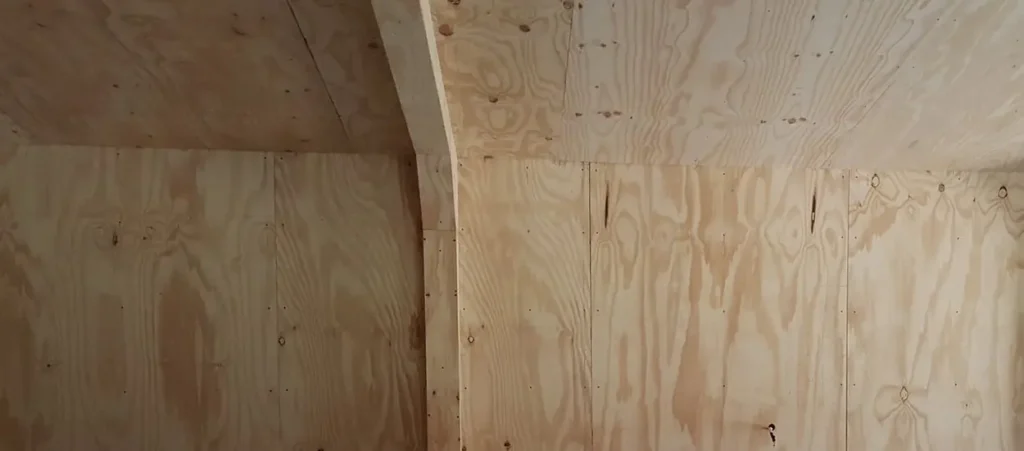Constructing a shed with plywood wall panels is a cost-effective and durable solution for extra storage or workspace. Plywood offers excellent structural stability, weather resistance (when properly sealed), and ease of installation. This step-by-step guide will walk you through the entire process—from planning to finishing touches—ensuring a sturdy and long-lasting shed.

1. Planning & Materials Needed
A. Design Considerations
Size: Standard sheds range from 8’x10′ to 12’x16′ (check local permit requirements).
Foundation: Choose between:
Concrete slab (most durable)
Gravel base (budget-friendly)
Wooden skids (portable option)
B. Essential Materials
Plywood wall panels (1/2″ or 5/8″ thick for walls, 3/4″ for flooring)
Pressure-treated lumber (2x4s for framing)
Roofing materials (asphalt shingles or metal roofing)
Exterior-grade screws & nails
Waterproof membrane (for moisture protection)
Paint or sealant (for weatherproofing)
Opt for marine-grade plywood if building in high-humidity areas.
2. Step-by-Step Construction Process
A. Building the Foundation
Level the ground and lay gravel or concrete footings.
Construct the floor frame with pressure-treated 2x4s (16″ on center).
Install plywood flooring (3/4″ thickness recommended).
B. Framing the Walls
Assemble wall frames (2×4 studs, 16″ apart).
Attach plywood wall panels using exterior screws (ensure panels are flush with the frame).
Cut openings for doors and windows.
C. Roof Installation
Build roof trusses (or use pre-made ones).
Sheath the roof with plywood (1/2″ minimum).
Install roofing material (shingles, metal, or corrugated panels).
D. Finishing Touches
Seal all plywood edges with waterproof sealant.
Paint or stain for added protection.
Install doors, windows, and ventilation as needed.
3. Why Plywood Wall Panels Are Ideal for Sheds
A. Strength & Durability
Plywood’s cross-layered construction resists warping and sagging.
Holds screws better than OSB or particle board.
B. Weather Resistance
When sealed properly, exterior-grade plywood withstands rain and humidity.
Less prone to swelling compared to MDF or fiberboard.
C. Easy Installation
Lightweight compared to solid wood.
Can be pre-cut for faster assembly.
D. Cost-Effective
More affordable than solid wood but just as sturdy.
Minimal waste due to standard sheet sizes.
Building a shed with plywood wall panels is a beginner-friendly project that delivers professional results. By following this guide, you’ll create a durable, weather-resistant structure perfect for storage, workshops, or garden sheds.

